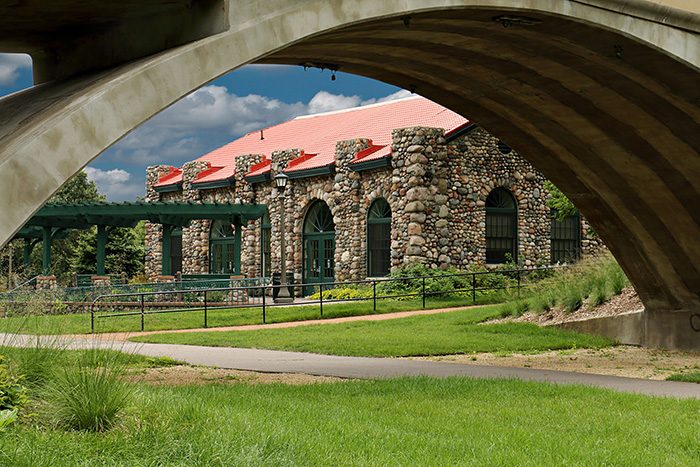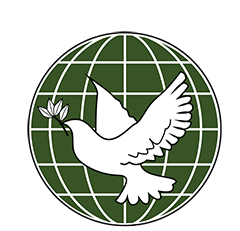newsletters
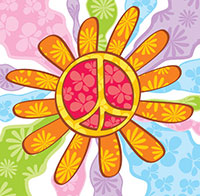

Seek peace within yourself and others • Reach out in service • Protect the environment • Respect diversity • Be a responsible citizen of the world
April 2025
Dalai Lama: “Do not let the behavior of others destroy your inner peace.”
WELCOME WCP'S NEWEST BOARD MEMBERS
Abby Sugahara
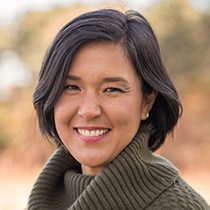 Abby Sugahara is a lifelong learner and mother of two living in Minnesota, USA. She has degrees in Anthropology and Business and is intensely curious about the ways in which different people see and understand the world. She has spent much of her professional life finding ways to use business for the greater good. Abby is currently a Reiki Master Practitioner and entrepreneur who strives to use her healing practice to cultivate love and peace within herself, her family, her clients, and the world.
Abby Sugahara is a lifelong learner and mother of two living in Minnesota, USA. She has degrees in Anthropology and Business and is intensely curious about the ways in which different people see and understand the world. She has spent much of her professional life finding ways to use business for the greater good. Abby is currently a Reiki Master Practitioner and entrepreneur who strives to use her healing practice to cultivate love and peace within herself, her family, her clients, and the world.
Vivek Goyal
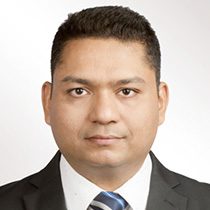 Vivek Goyal joined the World Citizen Peace Board in April 2025. He is also a member of Rotary International D3056 and a Board Member of Rotary Action Group For Peace. Vivek completed the Institute for Economics & Peace Ambassador Course, and he is working at grassroot level with Peace Ambassadors from different countries as well as working with the top leadership to strengthen the IEP’s 8 Pillars of Positive Peace as he envisions a just and peaceful world for all. To create awareness and take action, He is also promoting and supporting some peace projects and missions providing support and Peace education for all, especially for the young children and the vulnerable sections of the society. He deeply respects cultural diversity and strongly advocates promoting cultural exchange. In his professional life, He is an entrepreneur with experience of more than 20 years. He speaks English, Hindi and Business Level Japanese.
Vivek Goyal joined the World Citizen Peace Board in April 2025. He is also a member of Rotary International D3056 and a Board Member of Rotary Action Group For Peace. Vivek completed the Institute for Economics & Peace Ambassador Course, and he is working at grassroot level with Peace Ambassadors from different countries as well as working with the top leadership to strengthen the IEP’s 8 Pillars of Positive Peace as he envisions a just and peaceful world for all. To create awareness and take action, He is also promoting and supporting some peace projects and missions providing support and Peace education for all, especially for the young children and the vulnerable sections of the society. He deeply respects cultural diversity and strongly advocates promoting cultural exchange. In his professional life, He is an entrepreneur with experience of more than 20 years. He speaks English, Hindi and Business Level Japanese.
WORLD CITIZEN PEACE ATTENDS MONTESSORI EVENT
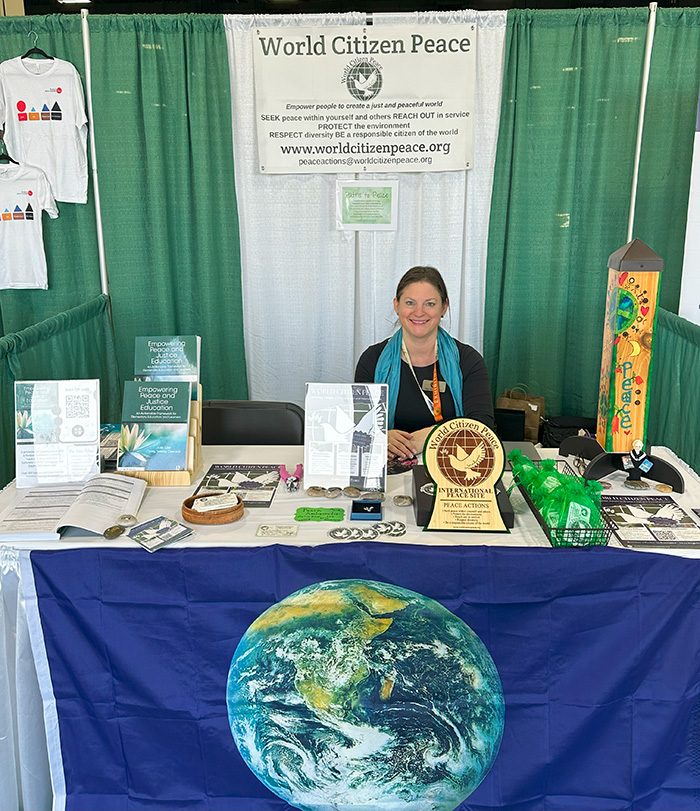
Board Director Amy Faust Mayer and Peace Ambassador Julie Lillie met hundreds of educators at the Montessori Event in Denver from Mar 13-16. They shared information on World Citizen Peace’s 3 Pathways to Peace (Peace Education, Peace Sites, Peace Ambassadors), awarded a peace site package to the lucky winner of the punch card promotion, and gave away a silver peace dove necklace to a lucky winner chosen randomly from those that registered to become Peace Ambassadors at the event.
It was inspiring to meet so many dedicated educators and learn about their school and classroom efforts towards peacebuilding.
WALTER ENLOE PEACE EDUCATION GRANT AWARDS
World Citizen Peace is delighted to announce the awardees of our inaugural round of grants for the Walter Enloe Peace Education Grant. Over 40 Peace Ambassadors from 13 countries submitted applications, from whom 5 awards were selected.
World Citizen Peace wishes to thank all our generous donors whose support made the Walter Enloe Peace Education Grant possible. Please read below to find out more about the great peace projects being done by our Peace Ambassadors.
Olubunmi Thomas, Oyo, Nigeria
For the ANNUAL PEACE WEEK, which I organize every year since 2023 every first week of April, to sensitize and propagate the message of Peace and charity. The senior students would be selected, four boys and four girls (Team A would have 2 boys and 2 girls and so also Team B). There would be a debate session on the topic: LOVE FOR HUMANITY BEGETS PEACE ON EARTH. A Panel of Teachers would score the participants. There would be refreshment and group photographs. After the debate session, there would be a short Peace talk which I will personally deliver and a general reaction will be entertained. I likewise distribute jotters like writing materials customized with Peace message to the students. IMPACT: The students would understand why peace is necessary for the good and wellbeing of all. These will inculcate ideals for charity, love, and forgiveness as these are elements for a peaceful people.
Marye Restrepo, Florida, United States
Cultivating Peace Through Hydroponic Harmony: A Classroom Garden Project: This project combines hydroponic gardening with peace education, aligning with World Citizen Peace’s Five Peace Actions and social-emotional learning objectives. We will establish an indoor hydroponic garden in our 5th grade classroom, serving as a living laboratory for peace education, social-emotional learning, and environmental stewardship. Students will set up and maintain the garden, using it as a focal point for discussions on peace, community, and sustainability. It is my hope that the project will foster a sense of responsibility, cooperation, and environmental awareness among students. By nurturing plants together, students will learn valuable lessons about patience, care, and the interconnectedness of all living things.
Biney Gladys, Accra, Ghana
The “All-Inclusion School and Community Peace Education” project is a comprehensive peace education initiative designed to promote social cohesion, emotional intelligence, ethical responsibility, and environmental consciousness among students, community members, and faith-based groups in Ghana. This initiative builds on my previous peace campaigns and aims to equip participants with the skills needed to foster dialogue, prevent conflict, and create a culture of peace in their schools, communities, and religious spaces.
Faith Samson, Borno, Nigeria
The Stop Bullying project will promote peace in school among children and make them grow into responsible adults. The family and community benefit when we have honest and law-abiding citizens. PROMOTE PEACE: Development and productivity only happen in a peaceful environment. STOP BULLYING will end violence among children, promote peaceful coexistence in class and school environments. Learning will become fun through effective participation and focus. SOCIAL: Stop Bullying campaign will feature motivating songs, drama, rhymes, poetry and spoken words which will make school a fun place to be. Areas of focus also include emotional and ethical learning.
Guerschom Telebwe Jafari, Haut-Katanga, Democratic Republic of Congo
Holistic Education for Peace and Development Project Background and Rationale: In many schools, students face challenges that go beyond academic subjects: school violence, low self-esteem, lack of dialogue, and difficulties in managing their emotions. This project aims to address these challenges by integrating socio-emotional learning and the culture of peace into basic education (grades 1 to 6).
Specific Objectives
1.1 Strengthen academic skills through an interactive approach. Introduce teaching methods based on educational games, debates, and group work. Example: Mathematics and cooperation. Rather than an individual calculation exercise, students work in small groups on real problems (e.g., sharing fictitious resources fairly). This develops their logic while promoting collaboration and respect for the opinions of others.
1.2 Developing emotional and social intelligence. Helping students better understand and express their emotions through practical workshops. Example: The “Emotions Journal.” Every morning, students fill out a notebook where they write down their mood and draw what they feel. A moment of discussion in class allows them to share and learn to listen to others with empathy.
1.3 Raising awareness of the values of peace and tolerance. Teach the principles of conflict resolution and dialogue. Example: Mediation Theater. Students play roles where they must resolve a conflict (e.g.: dispute over a ball in the yard). Place to be. Areas of focus also include emotional and ethical learning.
Do you want to support peace projects such as those above and empower others to create a more just and peaceful world? Then, please consider donating to the Walter Enloe Peace Education Grant fund here.
PEACEMAKERS
In this new section, World Citizen Peace features Peace Ambassadors living in areas of turmoil or danger. This month’s essay is written by Lidia from Ukraine.
REACH OUT IN SERVICE
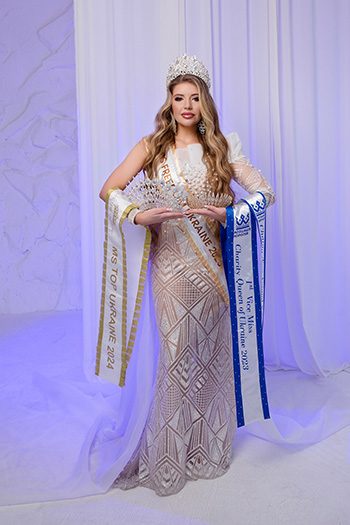
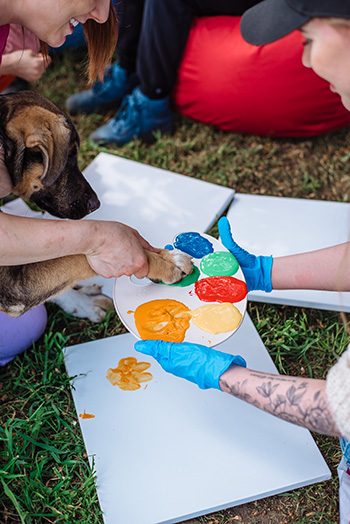
Hello! This my essay about activity in Ukraine:
As a peace ambassador for World Citizen Peace, I combine my expertise in veterinary medicine, zoo psychology, and charity work to make the world a better place. War has brought suffering not only to people but also to animals, who have become victims of violence and lost their homes. That is why my mission is to help those who cannot ask for help themselves.
Since early 2022, I have provided hundreds of free consultations for displaced and war-affected animals, as well as actively supported the “Big Heart” shelter. My initiative, “Paws of Hope,” is a unique project where dogs create paintings to raise funds for their treatment and care.
As Ms. Top Ukraine 2024 and Ms. Freedom Ukraine 2025, I use my platform to raise awareness about animal welfare and the importance of compassion. I advocate for animal care, environmental protection, the conservation of natural resources, and the defense of the rights and freedoms of my fellow citizens. This year, I will represent Ukraine at the international beauty pageant Miss Freedom of the World. Currently, I am working on establishing a charitable organization, “Queendom of Goodness,” to expand the scope of aid.
Peace is not just the absence of war but a world where kindness, empathy, and responsibility for those we have tamed prevail. This is my mission.
Thank you for consideration and supporting Ukraine.
Peace Ambassador Renee Dauk-Bleess – United States
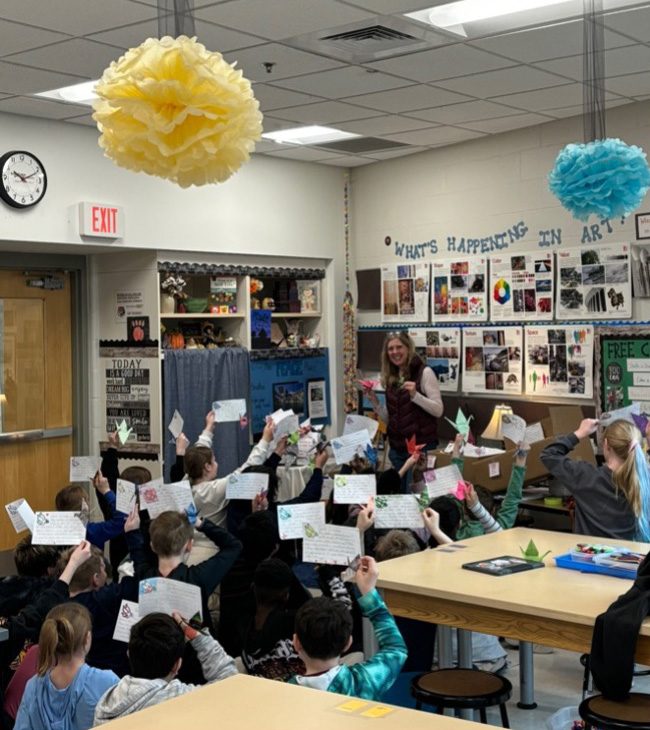
Renee Dauk-Bleess teaches art at Oak Crest Elementary, a third through sixth grade school in the small town of Belle Plaine, Minnesota. Renee also teaches peace.
Finding the intersection of teaching art and teaching peace has been Renee’s focus since stepping into the role of Art Specialist in 2019 after fifteen years of being a classroom teacher. Becoming a specialist for an entire school was a challenge. Instead of 25 children under her guidance, Renee had 430 students to reach and teach. But stepping into this new role also gave Renee an opportunity to think about her new space and the kind of culture she wanted to create in her art room.
Renee began by deliberately infusing her art room with tangible items that would bring a sense of calm to the room, along with a set of expectations to be together and be with oneself. Where do Renee’s students find peace in the art room? In the Peace Place, rocking in Grandmother’s rocking chair to help self-regulate. Listening to the water fountain while working on a project. Reflecting on what peace means while working with others. Or choosing that one special word to keep in a pocket to stay resilient and strong or show kindness and compassion. All this and more Renee weaves into the culture of her classroom as her students explore the world of art.
This year, with the help of the Walter Enloe Peace Education Grant from World Citizen Peace, Renee taught her fifth graders peace through the art of origami. With the grant, Renee was able to purchase origami paper and other supplies to teach her fifth graders how to fold peace cranes. Together Renee’s students learned not only the art of folding cranes, but patience, practice, the joy of success, and the satisfaction of helping others. The cranes will accompany letters of well-wishing as a service project.
Dr. Walter Enloe was a Professor of Education at Hamline University in St. Paul, Minnesota for many years. Before that Walter was a teacher and principal of the Hiroshima International School in Japan where he learned to fold origami cranes. He never stopped folding. Cranes hung everywhere in his university office. He gave cranes away to inspire. He gave them away as gifts. Strings of origami cranes were also a gift from Walter to Renee’s art room. Renee and her fifth grade students now carry on Walter Enloe’s legacy creating peace in the classroom.
There are several good videos showing how to fold an origami crane. This one is a particularly useful.
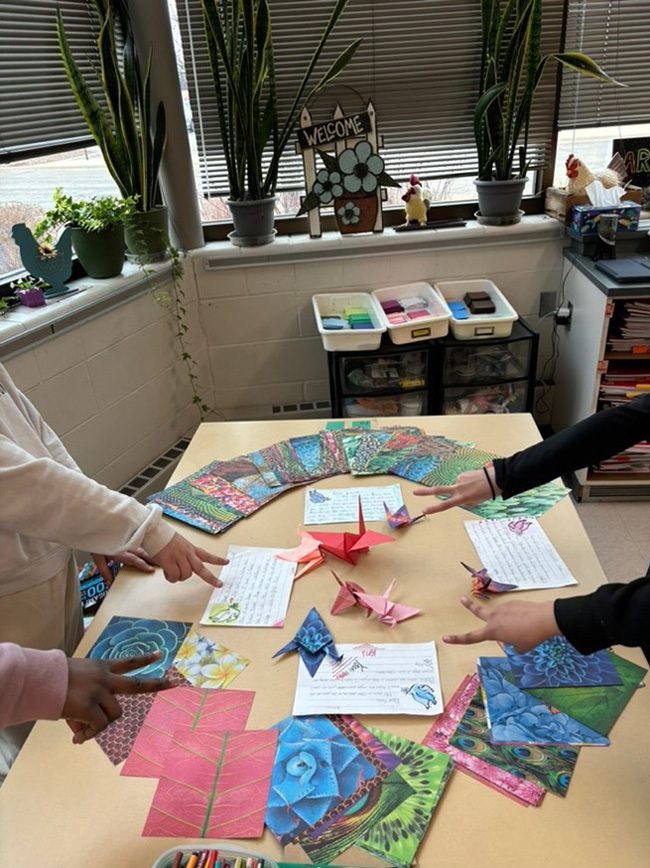
BECOME A PEACE AMBASSADOR TODAY!
Feeling inspired by the great actions of our Peace Ambassadors? Want to join World Citizen Peace community and create a just and peaceful world?
You can do that by becoming a Peace Ambassador! It is easy to do and is always free. Go to our website and register today to become a Peace Ambassador today!
DID YOU KNOW?
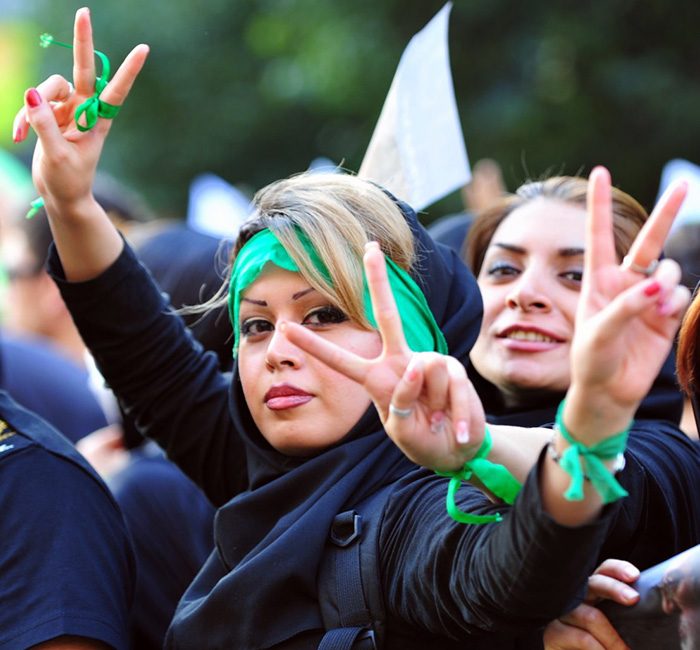
In many places and cultures around the world, people greet one another using the word “peace.” Such greetings incorporate the idea of peace, either directly or symbolically.
How many of the examples below do you know?
Directly Using the Word “Peace”
- Arabic: “As-salamu alaykum”(السلام عليكم) – Means “Peace be upon you.” And the common reply: “Wa alaykum as-salam” (وعليكم السلام) – “And upon you be peace.”
- Hebrew: “Shalom” (שָׁלוֹם) – Means “peace,” used as a greeting and farewell.
- Swahili: “Salaam” (borrowed from Arabic) or “Amani” (peace) – Sometimes used in greetings.
- Somali: “Salaam” is often used as a greeting. Somalis may also use: “Nabad miyaa”? – which means “Is there peace”? A common reply is “Haa, nabad.” – “Yes, peace.”
- Hawaiian: “Aloha” – Means love, peace, and compassion.
- Hungarian: “Béke veled / Menj békével.” Meaning “Peace be with you/Go in peace.”
- Sanskrit/Tibetan: “Namaste” (नमस्ते) / “Tashi Delek” (བཀྲ་ཤིས་བདེ་ལེགས) – Respectful greetings implying goodwill and peace.
- Maori (New Zealand): “Kia ora” – Wishing health and peace.
- Native American (Lakota): “Mitákuye Oyás’iŋ” – Means “All my relations,” expressing interconnectedness and peace.
Symbolic Gestures for Peace
- Handshakes, Bowing, or Open Palms – Many cultures use non-verbal gestures to show peaceful intentions.
- The Peace Sign (✌️) – A universal symbol derived from the US anti-war movement of the 1960s but now used in greetings and in many, many photographs around the world.
WORLD CITIZEN PEACE THROUGH TIME
In 1985, WCP’s founder Lynn Elling shared the following in the World Citizen Perspective newsletter:
“While concentrating on the short term goals of club development, we are not overlooking our long range goal that every subject, kindergarten through 12th grade, provide students with a global perspective.”
WCP’s focus then was the promotion of International Peace Sites. As more and more Peace Sites were added, it became difficult to keep track of all of them. This situation was sparking a need for something more.
The answer came in 1997 when Vera Kovacovic, then Executive Director of World Citizen, created the idea of Peace Education for World Citizen and developed it into fruition. (The name change to World Citizen Peace came later.)
Vera’s first step was to create an exploratory committee of insightful Minnesotans: Reverend Lowell Erdahl, WCP Board Member and retired Bishop of the ELCA Synod; Father David Smith and Mike Klein of the Peace and Justice Studies Department, both from St. Thomas University in St. Paul; Flora Tsukayama, full-time volunteer in Bloomington Schools, a suburb of Minneapolis; Martha Roberts, an elementary school counselor with Hopkins Schools; and eventually Lisa Blake, an elementary educator and educator trainer.
Lisa Blake and Mike Klein became the primary trainers for Elementary and Secondary Peace Education, respectively, for World Citizen’s Education Program. (Look for more details about Peace Education sessions in future newsletters.)
Vera Kovacovic then created a pilot study that asked Peace Sites representatives what they needed and wanted to remain active Peace Sites. The response was clear:
- How to Integrate Peace Education into existing curriculum
- Time to share ideas, resources, and experiences
- Time for planning
Guided by this advice, the first pilot program for elementary teachers was offered in the evening at the University of St. Thomas. In 2000, the first half-day program for elementary schools quickly turned into all-day sessions.
The all-day Peace Education sessions continued for the next 20 years.
Today, World Citizen Peace proudly supports peace education around the world through a pair of grant and scholarship programs
as well as offering the Peace and Literacy Summer Institute partnering with the Minnesota Reading Association, working with other organizations to further peace education, and creating new opportunities to support peace education at home and around the world.
